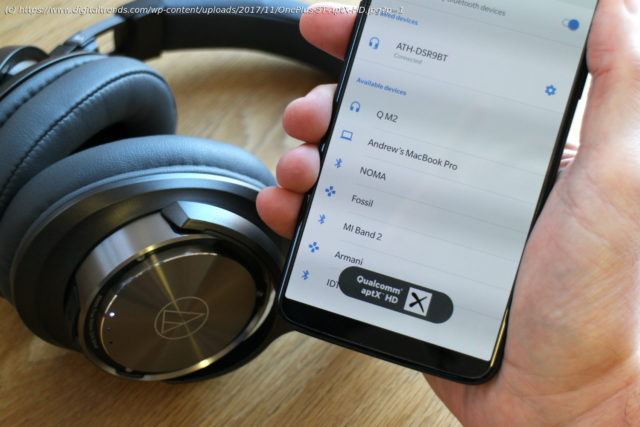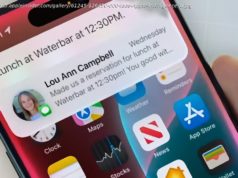The world of Bluetooth codecs can be a swamp of confusing technical jargon, especially when it comes to Qualcomm’s aptX family. Here’s what you need to know.
If you’ve ever bought a set of Bluetooth headphones, earbuds, or even a Bluetooth speaker, you’ve been choosing (perhaps without even knowing it) which Bluetooth codec you’ll use when connecting to your smartphone. Codecs are a little like the different grades of gasoline you can put in your car, in that they can affect the performance of your gear.
But unlike gasoline, the world of Bluetooth codecs can be a confusing, jargon-dense quagmire of terminology, compatibility, and features. And Qualcomm’s family of aptX codecs (pronounced “ap-tex”), which now includes five distinct versions, might be the most confusing of them all.
It’s tempting to throw your hands in the air and simply trust that you’re getting the best possible sound. But we’ll show you why that might not be the case, and what you can do about it. Some jargon will be involved, but don’t worry, we got you.
First, a quick primer on why we have Bluetooth codecs in the first place. Because the wireless pipe that Bluetooth creates between devices is pretty narrow when compared to other tech like Wi-Fi, it can’t always accommodate digital music in its original format. So codecs are employed to squeeze audio until it’s small enough to fit down that pipe.
Ever since 2003, when the ability to stream stereo sound over Bluetooth was launched, sub-band coding (SBC) has been the default codec used to do that job. If you own a Bluetooth audio device, whether it’s a phone, a speaker, or a set of wireless headphones, it supports SBC. Having a default codec is great — it’s what ensures that all Bluetooth audio devices will work together.
The trouble is that despite the fact that SBC is capable of delivering very good sound quality, many manufacturers hobbled its data rate in the early days of Bluetooth audio as a way of ensuring that dropouts wouldn’t happen. After all, you might be willing to put up with less-than-perfect sound. But audio that cuts out all the time? Forget about it. That earned SBC a bit of a bad rap. It also didn’t help that SBC suffered from significant latency.
At this point, the aptX codec had already been in use in a variety of settings, like filmmaking and broadcast, when the company that owned it realized it had the potential to work as an alternative to SBC. AptX’s key benefits over SBC are higher-quality audio and lower latency — in other words, you could expect better sound, and if that sound was attached to video, you could expect better synchronization between what you saw and what you heard. The aptX suite of technologies eventually was purchased by Qualcomm in 2015.
The trouble with all alternative codecs (including aptX, AAC, LDAC, etc.) is that they require support on both the source (a phone, computer, or other devices) and the sink (speaker, headphones, earbuds) in order to work.
If your phone can do aptX, but your headphones can’t, the Bluetooth connection will revert to SBC, or possibly AAC, if AAC is supported on both devices. In the Android world, this is rarely a problem. AptX has been included in Android almost since the get-go. As long as your audio product works with aptX, that’s what the two gadgets will use.
But to this day, Apple, one of the biggest smartphone makers in the world, refuses to include any non-SBC codec except AAC on its iOS and iPadOS devices.
Initially, many product reviewers were impressed by aptX, and felt that it delivered improved audio quality over non-aptX-equipped gear. You may still see some reviewers, including folks who write for Digital Trends, complain when wireless headphones or earbuds lack aptX.
This is partly because aptX uses a different form of lossy compression than SBC or AAC — the SBC alternative favored by Apple — and some people prefer the way it sounds. But it’s also something of a holdover from the days when Bluetooth bandwidth was smaller and SBC was often forced to run at lower bit rates, whereas aptX always runs at a fixed 352 kilobits per second (Kbps).
AptX’s nondestructive form of compression was especially beneficial in those early days when most people were listening to digital music in MP3 format. SBC and AAC use psychoacoustic models of compression, which can make already heavily compressed files like MP3 sound worse, whereas aptX does a better job of preserving the details in these files.
These same benefits can still be appreciated today, depending on the source. If you’re streaming Spotify using a free account, the best possible audio setting only delivers 160 Kbps, which means a lot of compression has already been applied. And since Spotify streams in the Ogg Vorbis format, which can’t be used over Bluetooth, your phone has to decode and then re-encode that stream into SBC, AAC, or (if your device supports it) aptX.
On the other hand, if you’re starting with lossless, CD-quality sound, you may not hear much of a difference between codecs at all.
Over time, aptX has evolved from a single codec to an entire family of codecs, each with its own strengths, weaknesses, and compatibility requirements. Latency is a particularly thorny challenge for Bluetooth audio because there are so many links in the chain between the time when a sound is generated by a device like a phone and when it is finally turned into a sound you can hear on your wireless headphones.
Depending on your devices and their supported codecs, latency can range as high as 320 milliseconds. For music listening, this doesn’t matter at all, but for movies, YouTube, and especially gaming, it’s too long.






